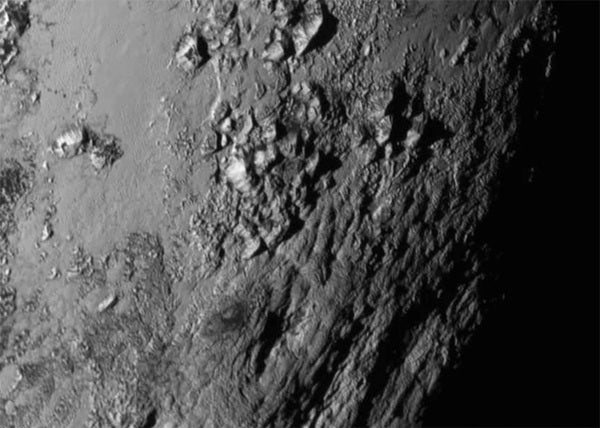Seven weeks after New Horizons sped past the Pluto system to study Pluto and its moons — previously unexplored worlds — the mission team has begun intensive downlinking of the tens of gigabits of data the spacecraft collected and stored on its digital recorders. The process moved into high gear on Saturday, September 5, with the entire downlink taking about one year to complete.
“This is what we came for — these images, spectra, and other data types that are going to help us understand the origin and the evolution of the Pluto system for the first time,” said New Horizons Principal Investigator Alan Stern of the Southwest Research Institute in Boulder, Colorado. “And what’s coming is not just the remaining 95 percent of the data that’s still aboard the spacecraft — it’s the best data sets, the highest-resolution images and spectra, the most important atmospheric datasets, and more. It’s a treasure-trove.”
Even moving at light speed, the radio signals from New Horizons containing data need more than 4.5 hours to cover the 3 billion miles (5 billion kilometers) to reach Earth.
As a flyby mission, New Horizons was designed to gather as much information as it could, as quickly as it could, as it sped past Pluto and its family of moons — then store its wealth of data to its digital recorders for later transmission to Earth. Since late July, New Horizons has only been sending back lower data-rate information collected by the energetic particle, solar wind, and space dust instruments. The pace picked up considerably on September 5 as it resumed sending flyby images and other data.
During the data downlink phase, the spacecraft transmits science and operations data to NASA’s Deep Space Network (DSN) of antenna stations, which also provide services to other missions, like Voyager. The spacecraft’s distance from Earth slows communication rates, especially compared to rates offered by today’s high-speed Internet providers. With New Horizons past Pluto, the typical downlink rate is approximately 1–4 kilobits per second, depending on how the data is sent and which DSN antenna is receiving it.
“The New Horizons mission has required patience for many years, but from the small amount of data we saw around the Pluto flyby, we know the results to come will be well worth the wait,” said Hal Weaver from the Johns Hopkins University Applied Physics Laboratory in Laurel, Maryland.
The team also plans to continue posting new, unprocessed pictures from the Long Range Reconnaissance Imager on the New Horizons project website each Friday.










